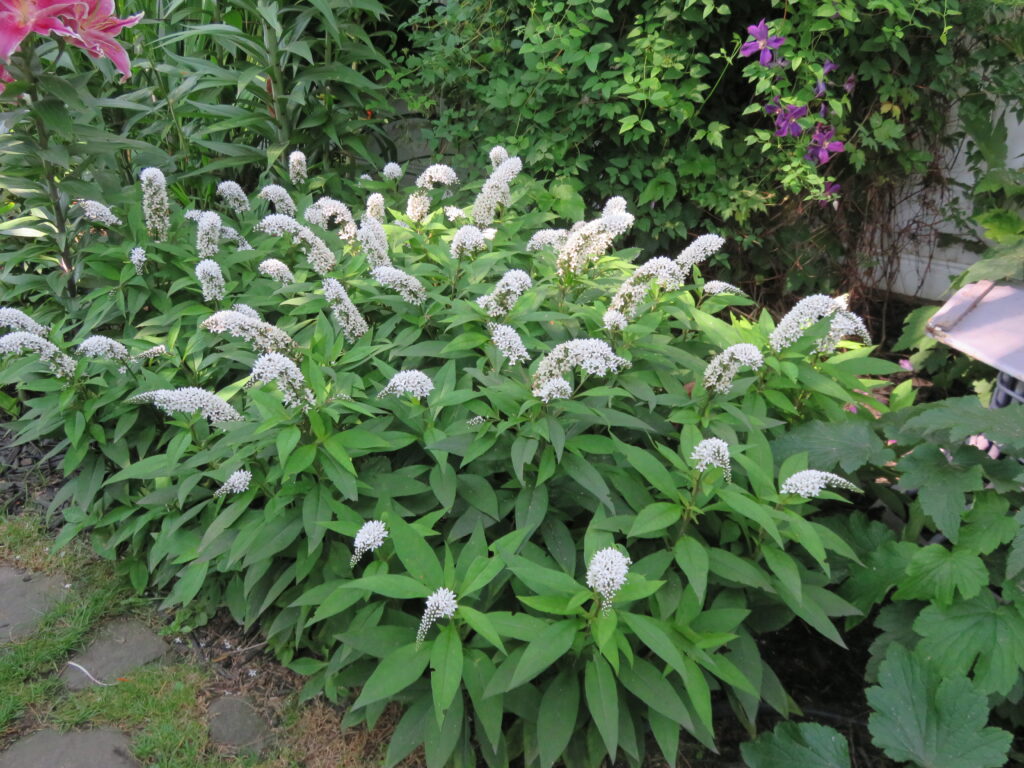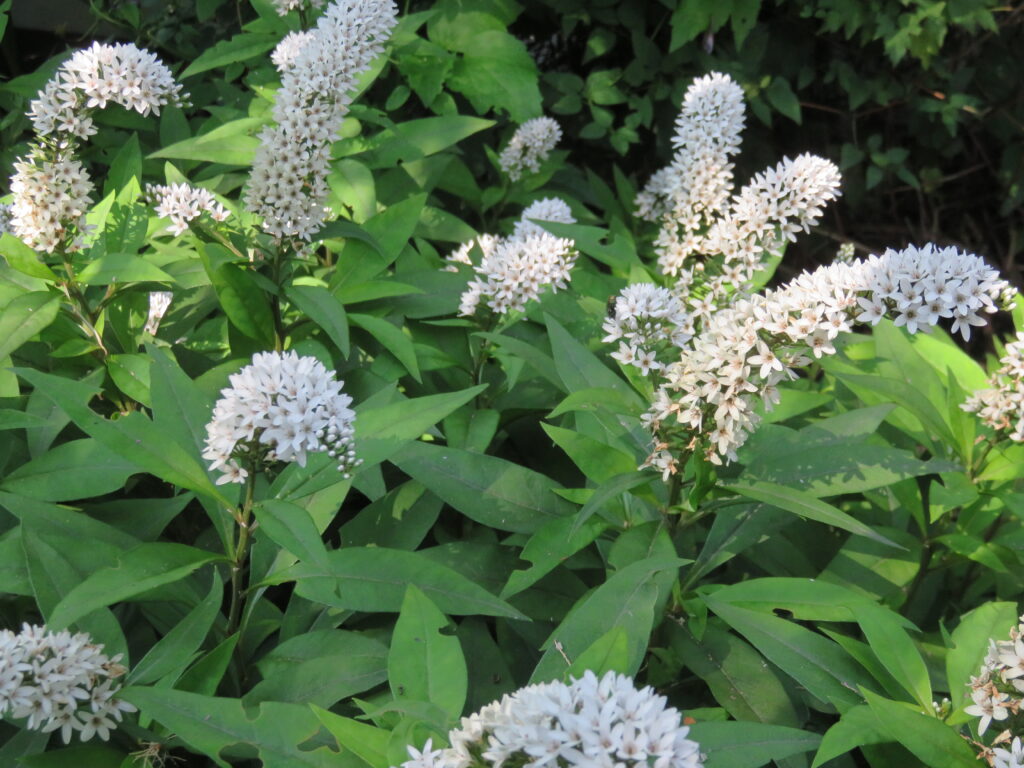
Gooseneck loosestrife (Lysimachia clethroides) can be both a delight and a weedy nuisance – depending on where you garden. (USDA hardiness zones 3 – 8). This native of southeast Asia grows aggressively in some locations in the U.S. where it has escaped into woodlands, wet areas, and on sunny, sheltered mountainous slopes. The perennial has upright rigid branching which bear unique white flowers (racemes) that bloom from June through August.
Gooseneck loosestrife is a fast-spreading plant that prefers partial sun and moist well-drained soil. Keep this aggressive perennial in check as it spreads aggressively via rhizomes and may become weedy from seed dispersal. It grows less aggressive in shady, dry soils although flower numbers are fewer and growth may be leggy.
Gooseneck loosestrife grows 2 -3 feet height and 3 feet spread. It can also be utilized as a groundcover. Leaves are slender with a tapered point. Raceme flowers average 12-18 inches in length and pure white. The fall foliage takes on gold to yellow tints. In northerly latitudes, gooseneck survives frigid winters by blanketing a 2–3-inch layer of mulch around the plant base.

In early spring, cut back all the stems to within 2 inches of the ground. Spring growth emerges from the crown and flowers appear in June until October. Keep it cornered in planting areas bounded by hardscaping. Every 3-4 years divide rhizomes in the spring to both limit its spread yet invigorate this rhizomatous plant. Judicious deadheading of spent flowers triggers reblooming and reduces seed formation. Flowers are particularly attractive to butterflies. It is relatively deer resistant.
Commercially, gooseneck loosestrife is produced by the cutflower florist industry. Floral stems may last over a week. Gooseneck earns its name for its flower spikes that mimic the curve of a goose’s neck.
Varieties:
‘Lady Jane’ (seed and vegetative produced) produces pure white blooms in late summer.
‘Geisha’ grows 2 feet tall with creamy yellow margin foliage; less aggressive (tamer) than species; 1-foot-long nodding white flower racemes in late summer.

 Posted in
Posted in 
